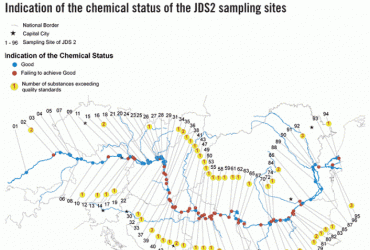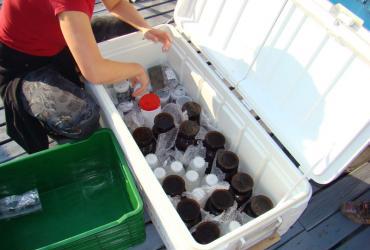The chemical analysis revealed a significantly decreasing profile of nitrate concentrations moving downstream the Danube. A comparison with the JDS1 results of 2001 revealed higher concentrations of nitrates and mostly lower concentrations of orthophosphates.
Among the EU's Priority Substances (the EU has 33 substances or groups of substances which have been shown to be of major concern for European waters, including priority hazardous substances), di-(2-ethylhexyl)_phthalate (DEHP) was found in nearly all JDS2 water samples at relatively high concentrations; in 44% of the water samples, the proposed environmental quality standard (commonly agreed concentration levels that are acceptable for "good quality" under the WFD) was exceeded. At several sites, an indication of WFD non-compliance was found for polycyclic aromatic hydrocarbons, nonylphenol, tributyltin and trichlorobenzene. The concentrations of metals in water were found above the quality targets at only three sites. In general, the average concentrations of Priority Substances detected during the JDS2 tend to be lower than those measured during the JDS1, especially for organic substances.
The results of the Caesium-137 of Danube sediment showed no significant toxic effects. The regional distribution of Caesium-137 contamination mainly originated from the Chernobyl accident in May 1986. The JDS2 results demonstrate a clear general decrease by a factor of 10 in the Caesium-137 activity concentration of Danube sediments between 1988 and 2007. Due to the decreased artificial radioactivity levels in the Danube River, there are therefore no associated health risks. Naturally occurring radionuclides such as Radium-226 and Radium-228 in the Danube and tributary sediments were found in normal geochemical activity concentration levels. No enhanced anthropogenic input from industrial sources could be detected.
Can people eat fish from the basin without a health risk?
Yes, but further investigation of mercury concentrations is needed in some areas.
For more detailed results from the JDS2, please download our JDS2 Publications.




















